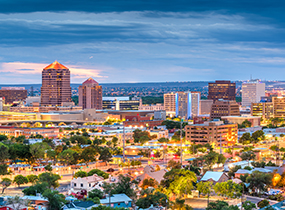Policy & Advocacy
Building on Recovery
This resources page has been developed to summarize and equip the urban place management industry with the most current, up-to-date information and guidance for pandemic recovery in our downtowns, city centers and neighborhood districts. The importance of our role in supporting the post-pandemic future is significant, and we must continue to emphasize the value the place management profession brings to our communities.
IDA’s report, Building on Recovery for Urban Place Management, outlines actions that urban place management organizations (UPMOs) can take to ensure downtowns, city centers and urban districts recover more strongly. Explore top priorities for COVID recovery and strategies that UPMOs can undertake to build on recovery efforts. This publication is free for both members and nonmembers.
Join IDA for online series, Advancing Places, empowering urban champions with the solutions needed to address the most critical urban issues of the day. This series is available for both members and nonmembers.
IDA members are reaping the advantages of the combined wisdom within our community and sharing how districts are recovering and moving forward.
Resources by Category
IDA is updating best offerings regularly—bookmark and return to this page to remain informed and review the latest resources! Do you have a resource or example of your response to the pandemic to share with members? If so, email IDA’s Research Team.
Throughout the pandemic, UPMOs across the country emerged as trusted resources filtering through the noise, for not just members but all downtown stakeholders and visitors. Communication remains as important as ever in the recovery stage.
Disseminate Key Data Points About District Recovery
These organizations frequently update metrics including pedestrian activity, office occupancy, public transit utilization and restaurant reservations to highlight economic recovery downtown.
-
- Brookings’ community-rooted economic inclusion playbook.
- Chicago Loop Alliance Monthly Reports
- Pittsburgh Downtown Partnership Downtown Reactivation Metrics
- Downtown Denver High Frequency COVID-19 Update
- Downtown Vancouver Economic Recovery Tracker
- Downtown Austin’s Economic Impact and Recovery Roadmap
- DTLA Recovery Compass
- Downtown DC Economy Tracking
Regularize Engagement and Outreach to Small Businesses In Your District
UPMOs should work to build out communications infrastructure to better reach small businesses and disseminate trusted information and resources.
Strengthen Partnerships with the Public Sector and Ensure your UPMO Has a Seat at the Table
The urgency of the pandemic forced municipalities and states to take swift action on many processes that were previously challenging to implement. UPMOs built stronger relationships with city partners and should actively participate in discussion and development of legislation impacting their district.
Creative uses of outdoor spaces flourished during the pandemic and built a sense of vibrancy even when gatherings were heavily restricted. These programs proved extremely popular in most cities worldwide and have thrived year-round. UPMOs are best positioned to work with city counterparts to make these programs safe and enduring.
Permanently Implement Open Streets Programs
Cities with legislation for permanent programs
Cities with extended outdoor programs
-
- Denver Temporary Outdoor Expansion Program until October 2022
- Los Angeles Al Fresco (up to 3 years extension)
Create Permanent Programs and Support for Outdoor Dining, Streeteries and Parklets
According to the IDA Urban District Consumer Survey (RRC Slides | Spring/Summer 2021 Results), 84% of respondents would like to keep the expanded outdoor restaurant seating in sidewalks, parking spaces and streets at least some of the time, and 57% want to make these changes permanent.
-
- Cincinnati Center City Development Corp’s first round of 70 permanent streeteries were completed in May 2021.
- River City Company in Chattanooga SPROUTS Grant Program helps businesses expand outdoor capacity.
UPMOs need to recognize that coming downtown or visiting urban commercial districts, more than ever before, will be a choice. Some fraction of office workers will work remotely, but one of the main reasons that workers enjoy coming to the office is for the amenities nearby. UPMOs should strive to give workers and visitors compelling reasons to travel downtown. Getting “back to normal” will require a multi-pronged effort across all sectors.
Advocating and Facilitating a Return to Office
Office occupancy data
-
- Kastle Back to Work Barometer (weekly updates on weekly office occupancy across 10 large U.S. metros).
- Research by economist Nick Bloom estimates that ultimately, remote work will account for one-fifth of all workdays, compared with just 5% pre-pandemic.
Return to Office Initiatives
-
- Denver’s Ready coalition calls for companies to responsibly return to the office.
- The Chamber of Commerce of Metropolitan Montreal’s “I love working downtown” campaign ($8.5 million CAD ($7 million USD) in funding from the Québec government)
- Golden Triangle BID in Washington D.C.’s Return to Office webinars
- Downtown Indy’s “Welcome Back to Work Kits” for returning employees
Promote Storefront Businesses
Bright Brothers advises in its Spring Recovery Trends that it’s best for businesses and place managers to focus on fresh, timely content that highlights the best assets of your district, rather than pushing “Open for Business” campaigns. Positive emphasis on benefits of downtown areas yields better results, rather than spreading the incorrect characterization that all central districts were fully closed during the pandemic.
Incentive Programs
-
- Downtown Modesto launched the RAD Card, a digital gift card that matches (yes, doubles) the money loaded on it by leveraging federal and donor funds to stretch consumer dollars and stimulate local businesses – no strings or fees attached. The RAD card can come to your community too, email radcard@downtownmodesto about participation.
- Downtown Tempe Association’s A Mountain Challenge
- Downtown Greensboro’s Downtown Summer Passport
Dedicated websites to reacquaint local and regional visitors to district offerings
-
- University City District Rediscover West Philly
- Downtown Halifax Feel Good Moments
- Georgetown BID (Washington D.C.) How Unexpected.
- Downtown Seattle Association Love Seatown
Placemaking
Establishing strong reasons for people to come downtown is crucial—not just for attracting visitors to our city centers, but for giving employees added motivation to interact at the office in a hybrid environment and ultimately restoring the vibrance and vitality of central urban neighborhoods.
-
- Montclair BID’s Fresh Air Montclair (public art in vacant storefronts)
- Rosslyn BID’s Rosslyn Refresh campaign
- Downtown Oklahoma City’s Community Action Micro-Grants
- Downtown Boston BID’s Welcome Back Ambassador videos
The pandemic, coupled with the summer of focus on racial inequality in the U.S. in 2020, underscored the deep-seated racial and economic inequities that challenge our nation and the work of place management. As we recover from the pandemic, we must recover with special attention to diversity, equity and inclusion that empowers all to live, work, and play in our districts.
Develop Programs Supporting Minority Entrepreneurs
-
- The Downtown Partnership of Baltimore’s BOOST (Black-Owned and Operated Storefront Tenancy)
- The Golden Triangle BID in Washington D.C.’s Grow Golden program
The pandemic and racial equity concerns have shaken up urban place management organizations. Organizations can use this opportunity to revisit their strategic plans to incorporate diversity, equity and inclusion internally and expand districtwide programming to be more inclusionary. UPMOs with a diversity of staff are better able to ensure a diversity of programming in their districts.
The unprecedented funding for COVID recovery from the federal government in many nations offers new opportunities to invest in downtowns and urban districts. For organizations that already have a district master plan, this is an opportunity to accelerate the implementation of those shared visions. If no district master plan yet exists, this is the time to develop one.
Pedestrian, Multimodal and Green Infrastructure Investment
-
- National Landing BID’s “People Before Cars” public awareness campaign
- Downtown Davenport Partnership “Davenport 2030: A Resilient City” master plan
Downtown and District Recovery Roadmaps
-
- Downtown Austin Alliance’s Roadmap to Recovery and Resilience
- Louisville Downtown Revitalization Team Action Plan
- City of Chicago’s Central City Roadmap
- Rediscover Downtown Dayton Action Plan



